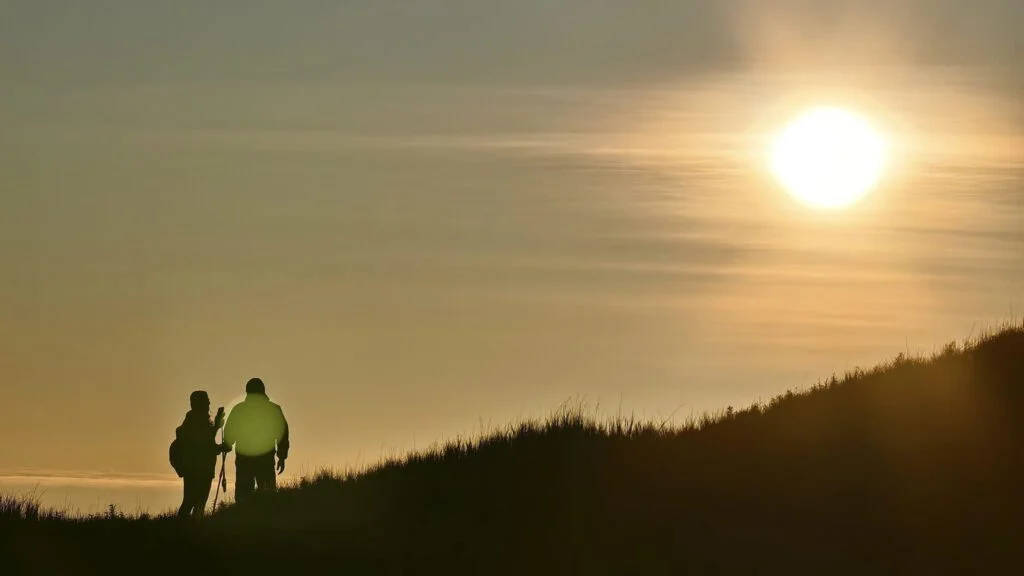
Mt. Pulag Quick Guide
Max Elevation: 2,926 MASL (3rd highest in PH).
Best Time: November to March (Coldest/Best Clearing).
Trail Difficulty:
Ambangeg: 3/9 (Beginner Friendly, Executive Trail).
Akiki: 7/9 (The “Killer Trail” – Steep & exposed).
Tawangan: 6/9 (The “Bloody Trail” – Mossy & leech-infested).
Ambaguio: 7/9 (Longest route via Nueva Vizcaya).
Crucial Rule: NO WALK-INS. Pre-booking & Medical Certificate Mandatory.
Quick Budget (DIY/Pax): ~₱6,500 – ₱7,500
Transport (MNL-BGO-Pulag): ~₱4,000 (Bus + Shared Jeep portion).
Mandatory Guide Fee: ₱1,200 per group (1-5 pax).
Entrance/Green/LGU Fees: ~₱600 total.
Homestay: ₱500 per night.
Medical Cert: ₱150 (if secured at Ambangeg).
Introduction: Climbing the Playground of the Gods
Mt. Pulag is the third-highest peak in the Philippines (2,926 MASL), renowned for its “Sea of Clouds” and distinct ecological zones ranging from pine forests to dwarf bamboo grasslands. Located in Benguet, climbing requires a mandatory medical certificate, a confirmed reservation, and strict adherence to the new 2026 weekend camping ban.
The Ascent: A Tale of Three Climates
The climb up Mt. Pulag isn’t just a hike; it is a physical stratification of worlds. Your journey begins in the Pine Forest Zone, where the air is thick with the resinous scent of Pinus kesiya (Benguet Pine). As you ascend past 2,300 meters, the environment shifts violently into the Mossy Forest—a damp, gnarled “refrigerator” draped in epiphytes and lichen that traps the cold.
Finally, you breach the tree line into the signature Grassland Summit. Here, the landscape opens into a golden ocean of Yushania niitakayamensis (dwarf bamboo). The temperature here can drop to sub-zero, and the wind bites exposed skin. While the famous “Sea of Clouds” is never a guarantee—it is a weather phenomenon, not a schedule—witnessing the sun ignite the Cordillera ranges at dawn is the ultimate reward for the shivering trekker.
Sacred Ground and New Rules
Beyond the view, this mountain commands respect. Known locally as the “Playground of the Gods,” it serves as the sacred resting place for the Ibaloi, Kalanguya, and Kankana-ey ancestors. Silence on the trail is not just for wildlife; it is a cultural imperative.
The 2026 Reality Check: The post-pandemic era has permanently altered the logistics of visiting. This guide covers the critical operational shifts for the 2026 season, most notably the strict ban on camping at Camp 2 during weekends (Friday-Sunday). If you plan to visit on a weekend, you must now utilize homestays at the Babadak Ranger Station and prepare for a grueling “sunrise assault” starting at 1:00 AM.
Table of Contents
Pre-Expedition Requirements: The “No Walk-In” Policy
To enter Mt. Pulag, you strictly need three non-negotiable items: a confirmed reservation from the Protected Area Management Office (PAMO), a valid “Fit to Climb” medical certificate, and a government-issued ID. Walk-ins are strictly prohibited, and weekend slots often sell out 1-2 months in advance due to strict carrying capacity caps.
Securing Your Slot (The PAMO Process)
The days of showing up at the ranger station hoping for a slot are over. The park enforces a hard limit (typically 500 pax/day) to prevent trail erosion. Reservations are centralized through the Mt. Pulag Protected Area Management Office (PAMO).
How to Book: You must contact the PAMO directly via their official Facebook page (“Mount Pulag National Park Protected Area Office”) or text their reservation hotlines: 0912-762-8844 / 0910-301-0423.
The Weekend Bottleneck: If you are targeting a Friday-Sunday climb, you must book at least 6-8 weeks prior. Weekday slots (Mon-Thu) are generally easier to secure and offer the bonus of allowing camping at Camp 2.
Solo Traveler Hack: If you cannot secure an individual slot, your best bet is to look for “Joiner Tours” on social media. These agencies pre-purchase block slots, saving you the administrative headache.
The Medical Certificate (Why You Can’t Skip It)
This requirement is not bureaucratic red tape; it is a survival protocol. At nearly 3,000 meters, oxygen levels drop significantly, triggering Acute Mountain Sickness (AMS) in unacclimatized hikers. The certificate must explicitly state you are “Fit to Climb” or fit for strenuous hiking.
The “Manila” Insider Tip: Do not wait until you reach the jump-off point to get your clearance. While there is a small clinic near the DENR Visitor Center in Ambangeg, the queue on weekends can take up to 2 hours. This delay will eat into your rest time before the 1:00 AM assault. Get your certificate from your local doctor or a generic clinic in Manila before you even pack your bag.
Quick Fees Overview (2026 Estimates)
Bring cash in small denominations as the ranger station does not have ATMs or reliable signal for e-wallets.
Fee Category | Cost (Locals) | Cost (Foreigners) | Notes |
|---|---|---|---|
Entrance Fee | PHP 175 | PHP 800+ ($15 USD) | Standard park access |
Environmental Fee | PHP 150 | PHP 150 | “Green Fee” for maintenance |
Cultural/LGU Fee | ~PHP 150 | ~PHP 150 | Paid to Bokod Municipality |
Practical Takeaway: Print two copies of your reservation voucher and medical certificate—one for the DENR registration and one to keep in your dry bag as a backup.
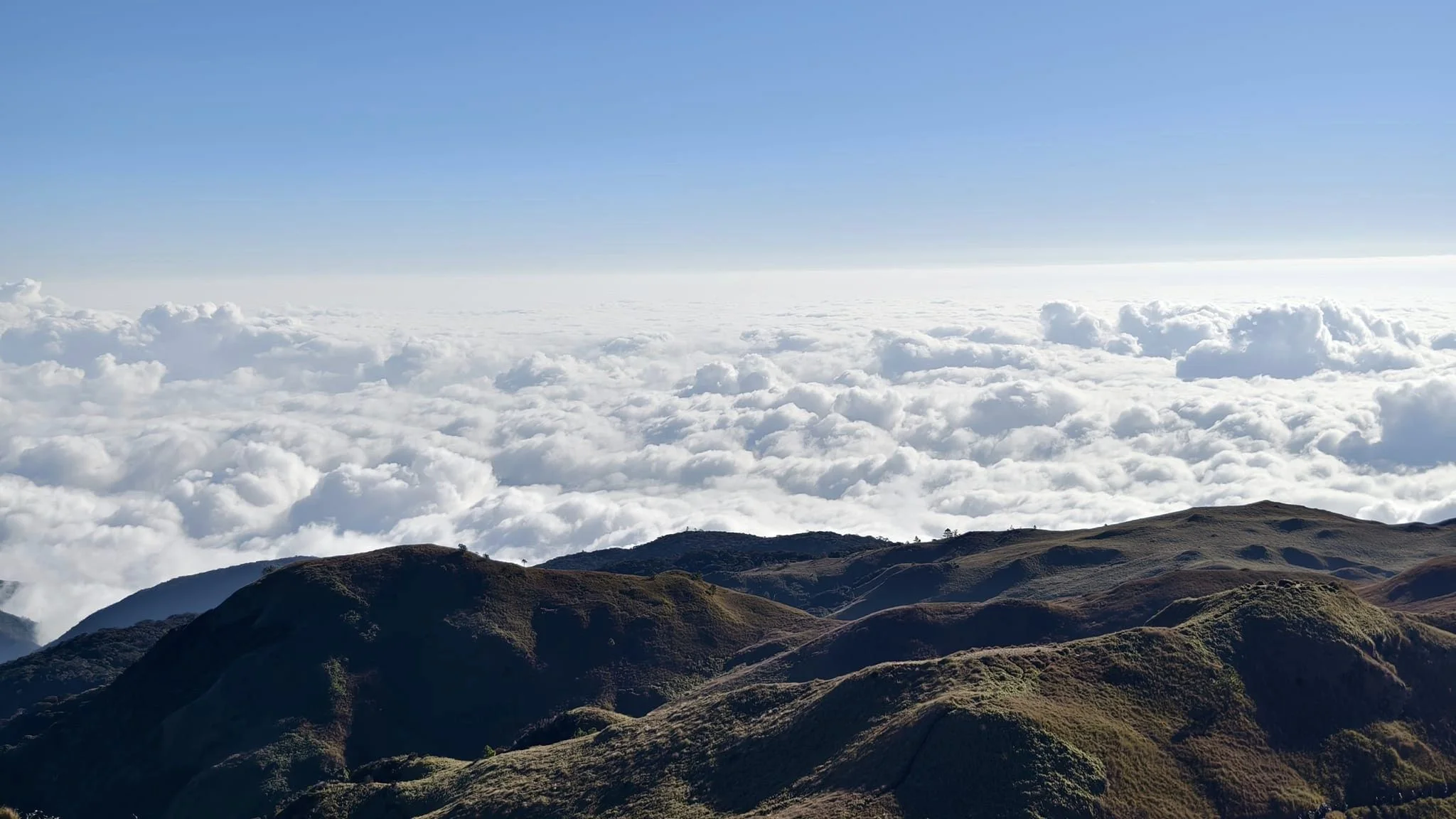
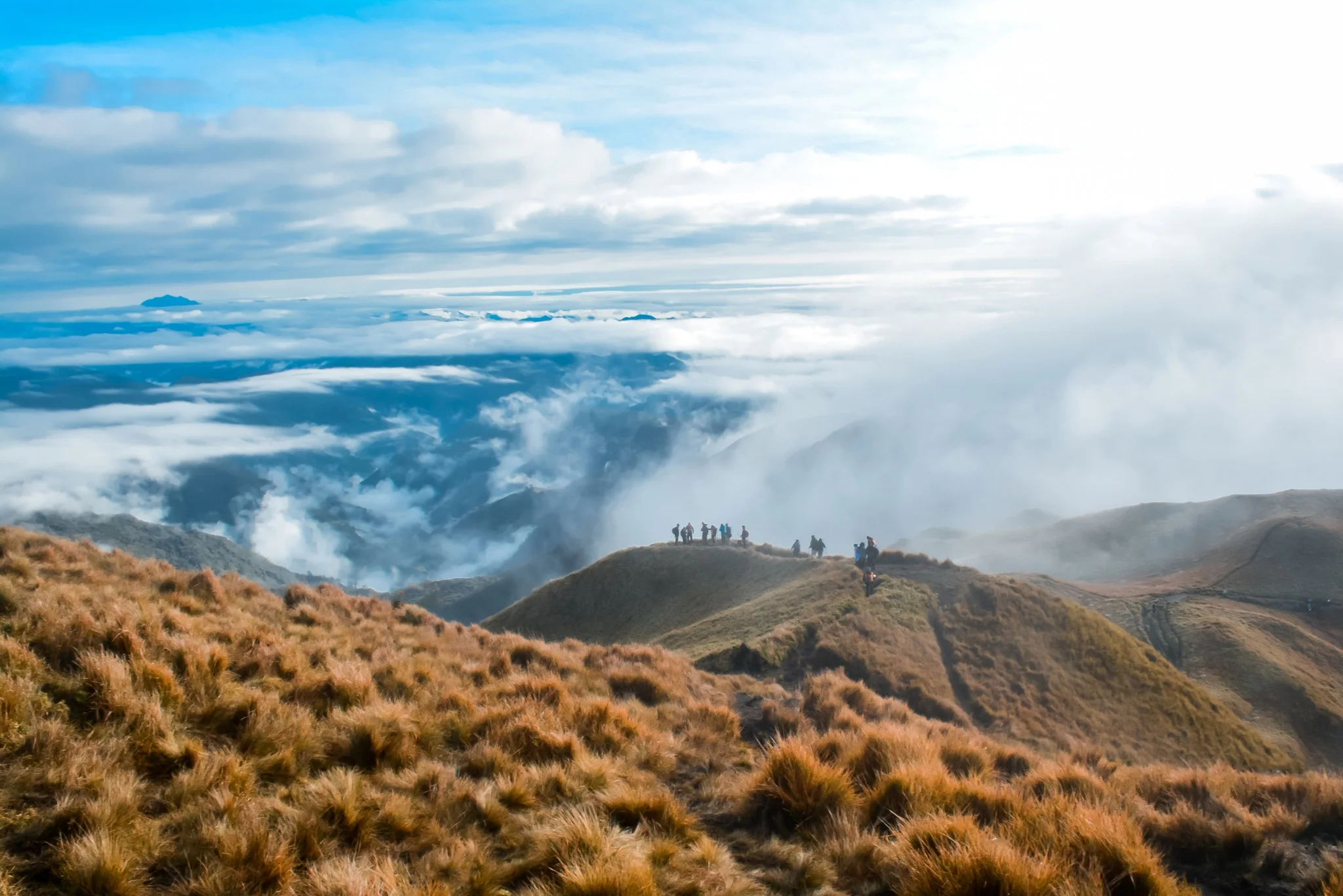
How to Get to Mt. Pulag: Manila to The Ranger Station
The most reliable route to Mt. Pulag involves a two-leg journey: first, a 4-6 hour premium bus ride from Manila to Baguio City, followed by a 3-4 hour charter via “Monster Jeep” to the Babadak Ranger Station. While public vans exist, they are notoriously unreliable for strict hiking schedules, making private charters or “joiner” groups the industry standard.
Leg 1: The Northern Pilgrimage (Manila to Baguio)
Your expedition begins on the pavement of EDSA. For 2026, the battle for the best ride north is strictly between Victory Liner and Genesis Transport (JoyBus). Forget the standard aircon buses unless you are on a strict budget; the 2-hour difference in travel time due to stopovers is better spent sleeping.
The “Deluxe” Advantage: Both operators now utilize the TPLEX (Tarlac-Pangasinan-La Union Expressway) extension, cutting travel time significantly. We strongly recommend booking a “First Class” or “Premier” seat to guarantee an on-board restroom—this eliminates the need for waking up at stopovers in Tarlac or Sison.
Bus Comparison Guide (2026 Estimates)
|
Operator |
Class/Service |
Terminal(s) |
Est. Price |
Travel Time |
Key Amenities |
|---|---|---|---|---|---|
|
Victory Liner |
First Class / Royal |
Cubao, Pasay |
₱1,100 – ₱1,500 |
4-5 Hrs |
2×1 Recliners, Toilet, Snack, Non-stop |
|
Victory Liner |
Regular Aircon |
All Terminals |
₱800 – ₱900 |
6-7 Hrs |
2×2 Seats, Multiple Stops, WiFi |
|
JoyBus (Genesis) |
Premier / Executive |
Cubao, Avenida |
₱850 – ₱1,100 |
4-5 Hrs |
“Lazy Boy” Seats, Tablet, Stewardess, Toilet |
|
Solid North |
Luxury P2P |
PITX |
₱900 – ₱1,100 |
5-6 Hrs |
Newer fleet, convenient for South/Cavite riders |
Leg 2: The Ascent to Bokod (Baguio to Ranger Station)
Upon arrival in Baguio, the smooth asphalt ends. The climb to Mt. Pulag via the Ambangeg trail requires a vehicle with immense torque and high clearance. Enter the Monster Jeep—an icon of Cordillera engineering. These are modified jeepneys featuring reinforced chassis, truck engines (often Isuzu or Mitsubishi), and aggressive tire treads designed to eat mud for breakfast.
The “Top-Load” Dilemma: Riding on the roof (top-loading) is a rite of passage, offering 360-degree views of the Ambuklao Dam and pine forests. However, it is not without risk.
-
The Reward: Unfiltered views and the rush of cold mountain air.
-
The Risk: Hypothermia (wind chill is severe), dust inhalation, and low-hanging branches.
-
Safety Rule: Only top-load on the paved sections. Move inside once the jeep hits the rough roads near Babadak to avoid being thrown off.
(Note: Monster Jeeps are usually parked at the Old Slaughterhouse Compound or arranged by tour coordinators to pick you up at the bus terminal.)
The Logistics Reality Check: DIY vs. Joiner
Here is the financial truth that catches many solo backpackers off guard: Mt. Pulag is expensive to do alone.
The “Monster Jeep” is a chartered service. Whether you are 1 person or 15 people, the rate is fixed—typically ₱8,500 to ₱10,000 for a round trip (Baguio-Ranger Stn-Baguio).
-
The DIY Trap: If you are a solo traveler or a couple, you will shoulder that entire ₱9,000 jeep fee plus the mandatory guide fee (₱1,200).
-
The Joiner Economy: Organized “Joiner Tours” pool solo travelers together. You pay a flat rate (usually ₱3,500 – ₱5,000 all-in from Manila), and the agency handles the jeep rental and slot reservation. Unless you have a group of 10+ friends (“Barkada”), joining an organized tour is mathematically the smarter choice.
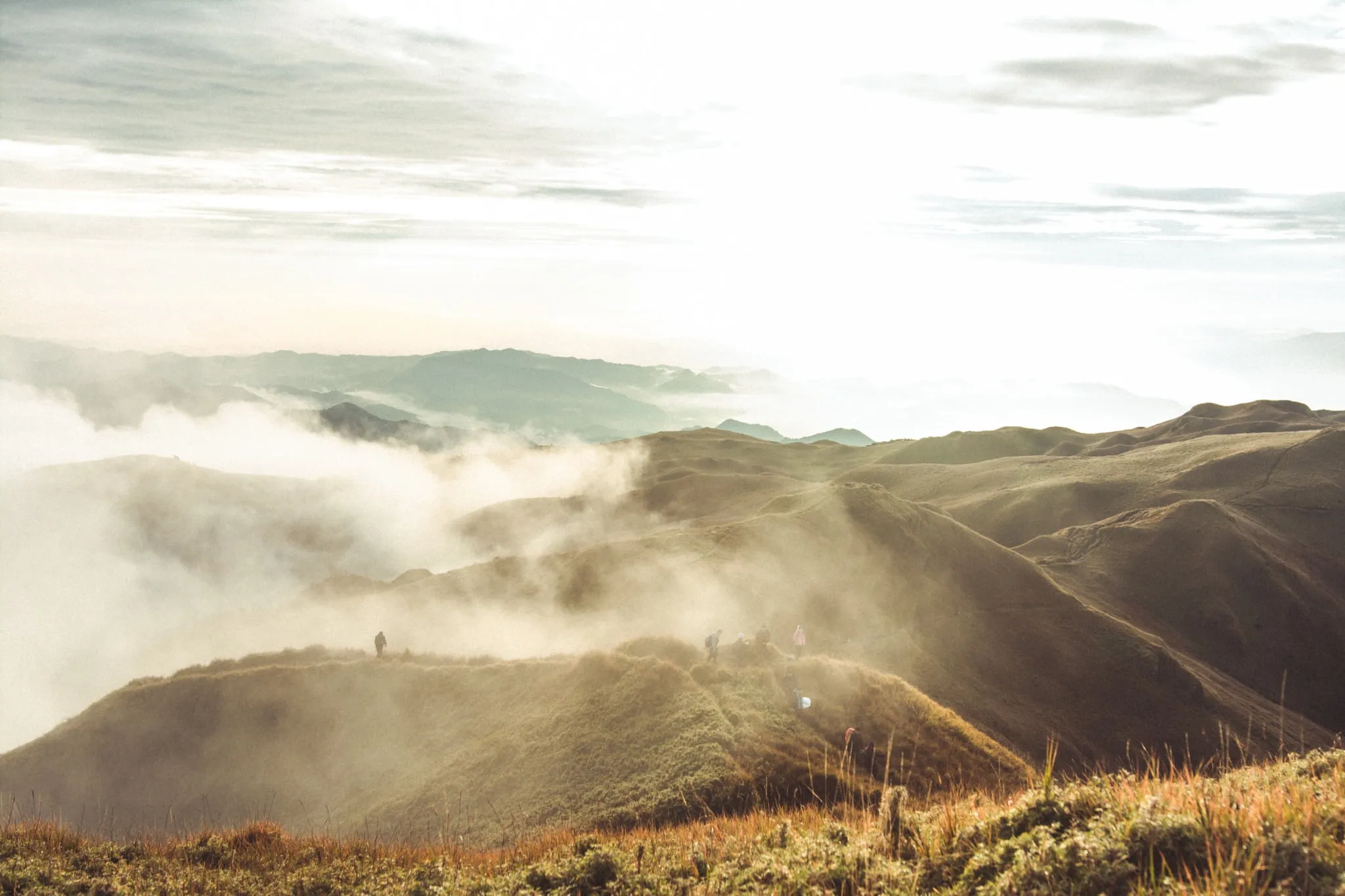
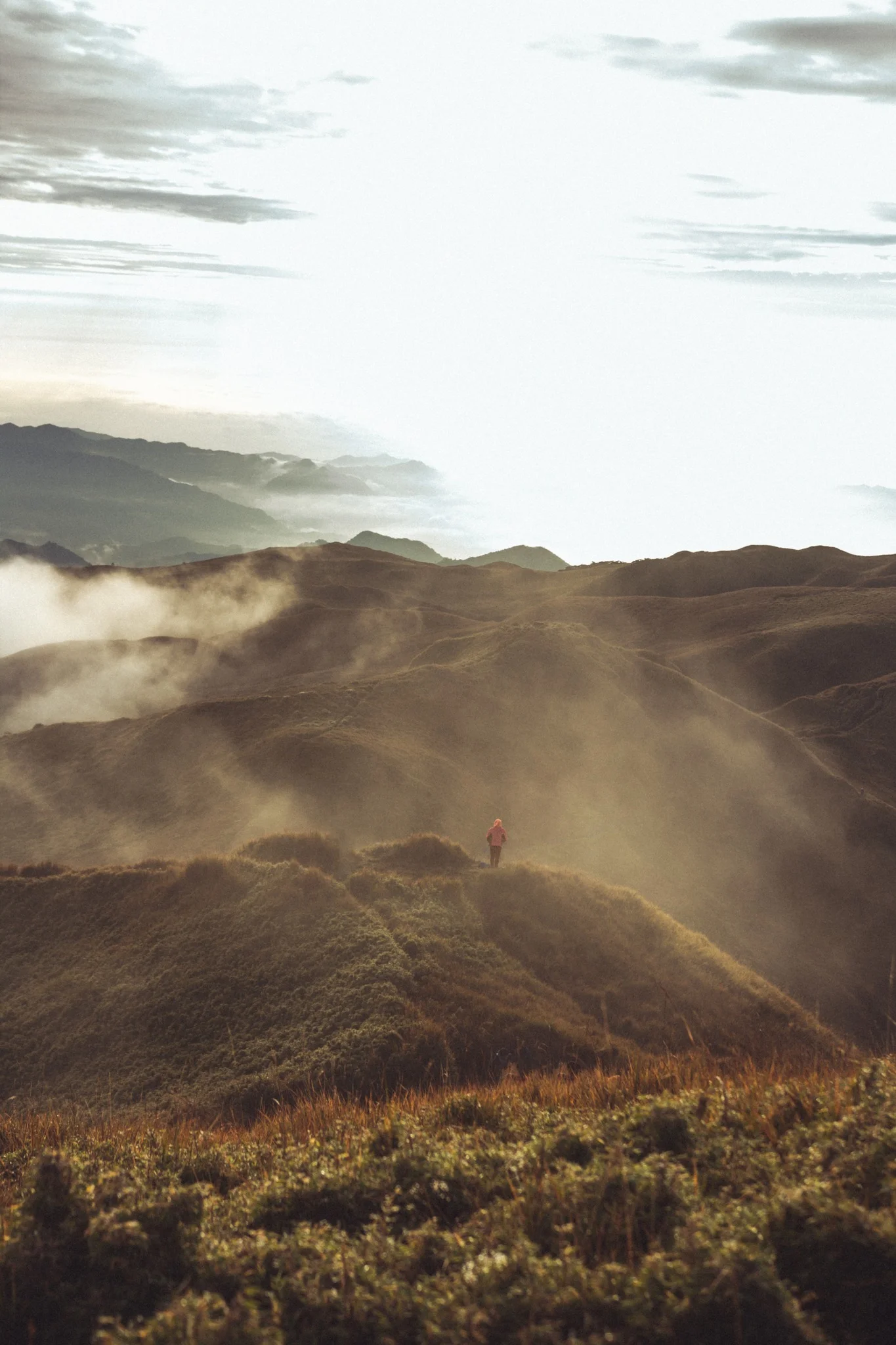
Accommodation: Homestays vs. Camping (The Weekend Rule)
The most critical logistical rule for 2026 is that camping at Camp 2 is strictly banned on weekends (Friday-Sunday) to allow the grassland ecosystem to regenerate; hikers must stay in accredited homestays at the Babadak Ranger Station. Traditional wilderness camping is now an exclusive privilege reserved for weekday expeditions (Monday-Thursday).
The Homestay Reality (Weekend Strategy)
If you are climbing Mt. Pulag on a weekend, you will be sleeping in the village of Babadak, not on the mountain itself. These are residential houses converted into dormitories, providing a direct economic lifeline to the local Ibaloi and Kalanguya families.
What to Expect: Do not expect hotel amenities. You will likely be sleeping on foam mattresses laid out on the floor of a large communal room, elbow-to-elbow with other hikers.
The “Cold” Truth: While blankets are provided, they are often thin. The temperature inside these uninsulated houses can drop to 10°C. Pro Tip: Bring your own sleeping bag liner or a thick fleece jacket to wear to bed.
Facilities: Bathrooms are shared and often utilize “bucket flush” systems. Hot showers are available at premium homestays like SMR Homestay or Baban’s Homestay, usually for an extra fee (₱50-₱100).
The Power Struggle: Charging outlets are scarce. With 15 hikers sharing 2 outlets, bringing a high-capacity power bank (20,000mAh) is mandatory.
Wilderness Camping (Weekday Privilege)
For purists, scheduling your climb between Monday and Thursday unlocks the classic Camp 2 experience. Situated at the edge of the mossy forest, this campsite offers front-row seats to the sunset and the Milky Way.
Facilities: Amenities are primitive. Expect pit latrines (holes in the ground with privacy walls) and no electricity.
Water Source: There is a natural spring nearby, but it requires a steep 15-minute trek down. While locals drink it directly, we strongly advise using a filter (like a Sawyer or LifeStraw) or purification tablets to avoid stomach issues that could ruin your summit assault.
Practical Takeaway: If you choose the homestay option, prepare for the “Sunrise Assault”—a grueling 1:00 AM wake-up call to start the trek in total darkness, racing to reach the summit before the sun breaks the horizon.
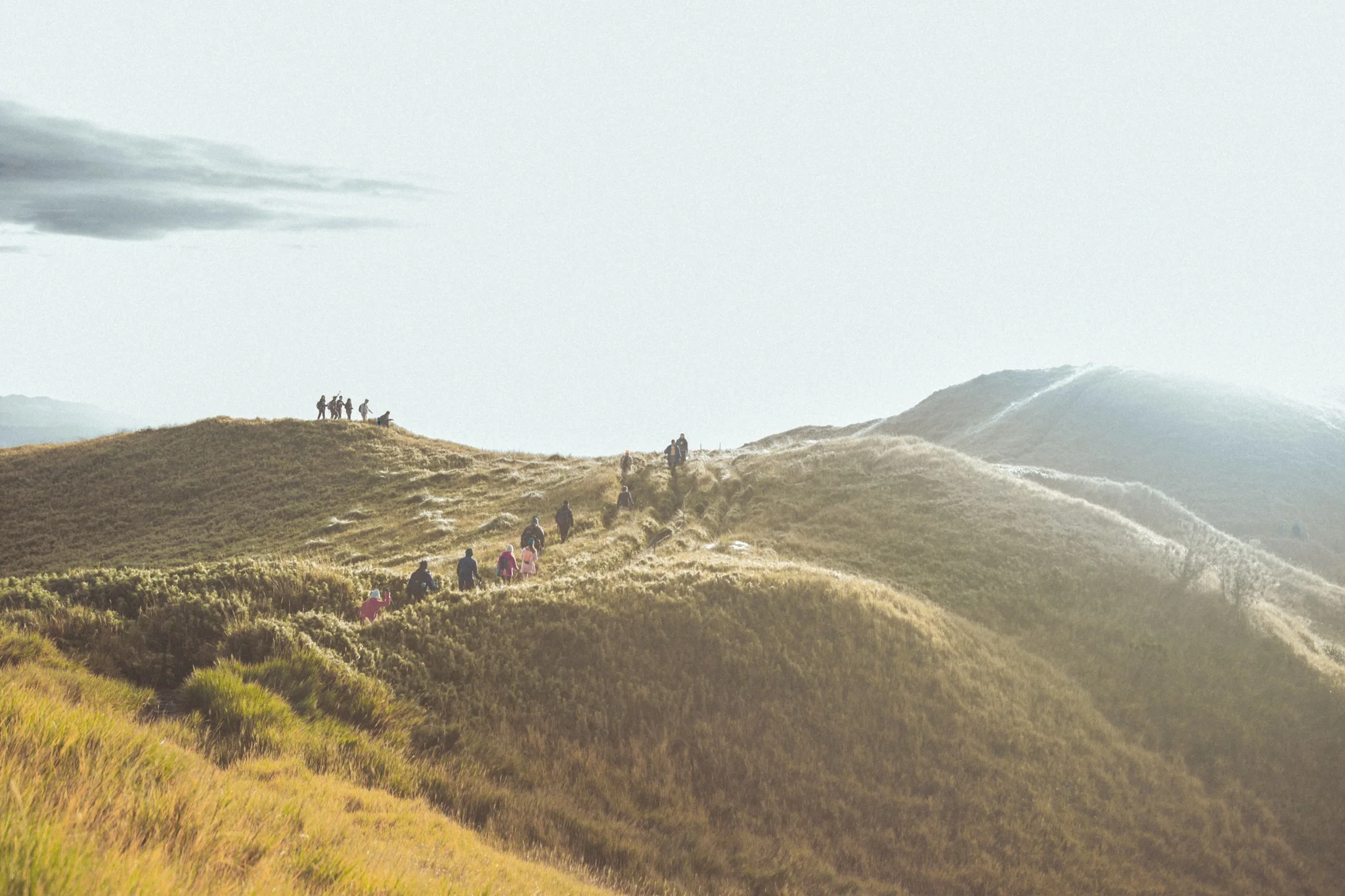
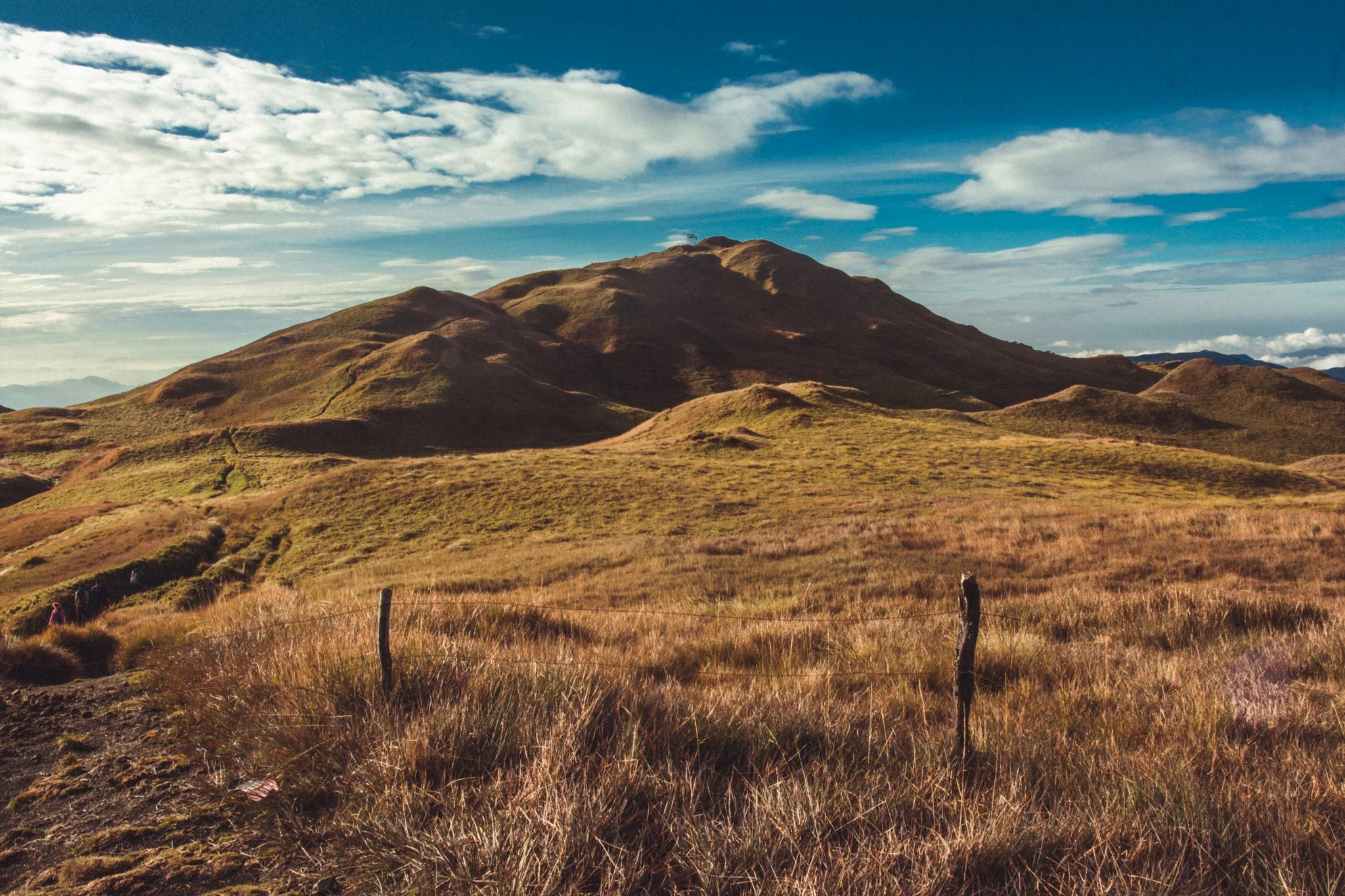
The Trail & Ecosystem: What the Hike Feels Like
Hiking the Ambangeg Trail is less of a steep climb and more of a gradual transition through three distinct biological worlds; you will start in a temperate pine forest, shiver through a damp mossy jungle, and finally emerge onto a sub-zero grassland summit that feels alien to the tropics.
Zone 1: The Pine Forest (The Warm-Up)
Your trek begins at the Babadak Ranger Station (~2,400 MASL). The first hour is deceptively pleasant. You walk on wide, established paths covered in a carpet of dried needles from the towering Pinus kesiya (Benguet Pine).
-
The Sensory Experience: The air here smells sweet and resinous. Sunlight filters easily through the sparse canopy, keeping you warm.
-
Terrain: The incline is gentle—rolling hills rather than steep stairs. It is easy to become overconfident here, but pacing is key. You are already at high altitude, and rushing now will cost you oxygen later.
-
Key Landmark: This zone terminates roughly around Camp 1, where many hikers take their first major hydration break.
Zone 2: The Mossy Forest (The “Refrigerator”)
Around 2,600 MASL, the environment shifts violently. One moment you are under tall pines; the next, you are swallowed by a dense, prehistoric cloud forest. This is the Mossy Forest, a critical watershed that acts like a giant sponge for the Cordilleras.
-
The “Refrigerator Effect”: You will physically feel the temperature drop by 3-5°C instantly. The canopy closes up, blocking the sun.
-
The Landscape: Every surface—tree trunks, rocks, and the trail itself—is draped in thick layers of sphagnum moss, ferns, and hanging lichen. It feels mystical and claustrophobic.
-
The Challenge: The trail narrows significantly. Twisted tree roots (known as “monkey trails”) create natural tripping hazards, and the ground is perpetually muddy. This is where your trekking pole becomes your best friend, probing for stability in the muck.
Zone 3: The Grassland Summit (The Playground)
As you breach the tree line near Camp 2, the canopy vanishes. You are now in the Grassland Zone, the signature landscape of Mt. Pulag.
-
The Vegetation: The slopes are covered in golden-brown Yushania niitakayamensis (dwarf bamboo), a species found only at high altitudes in East Asia.
-
The Exposure: With no trees to block the wind, the wind chill factor here is severe. If you are hiking before dawn, this is where the cold bites through denim and cotton (which is why we told you not to wear them).
-
The Summit Assault: The final push to the peak (2,926 MASL) is a steep assault on exposed earth. The lack of oxygen makes every step feel heavy. But as you look down, you realize you are now standing above the cloud line.
Practical Takeaway: Layering is critical. You will sweat in the Pine Forest, freeze in the Mossy Forest, and face biting winds in the Grassland. Keep a windbreaker accessible in your daypack so you can layer up without stopping for long.
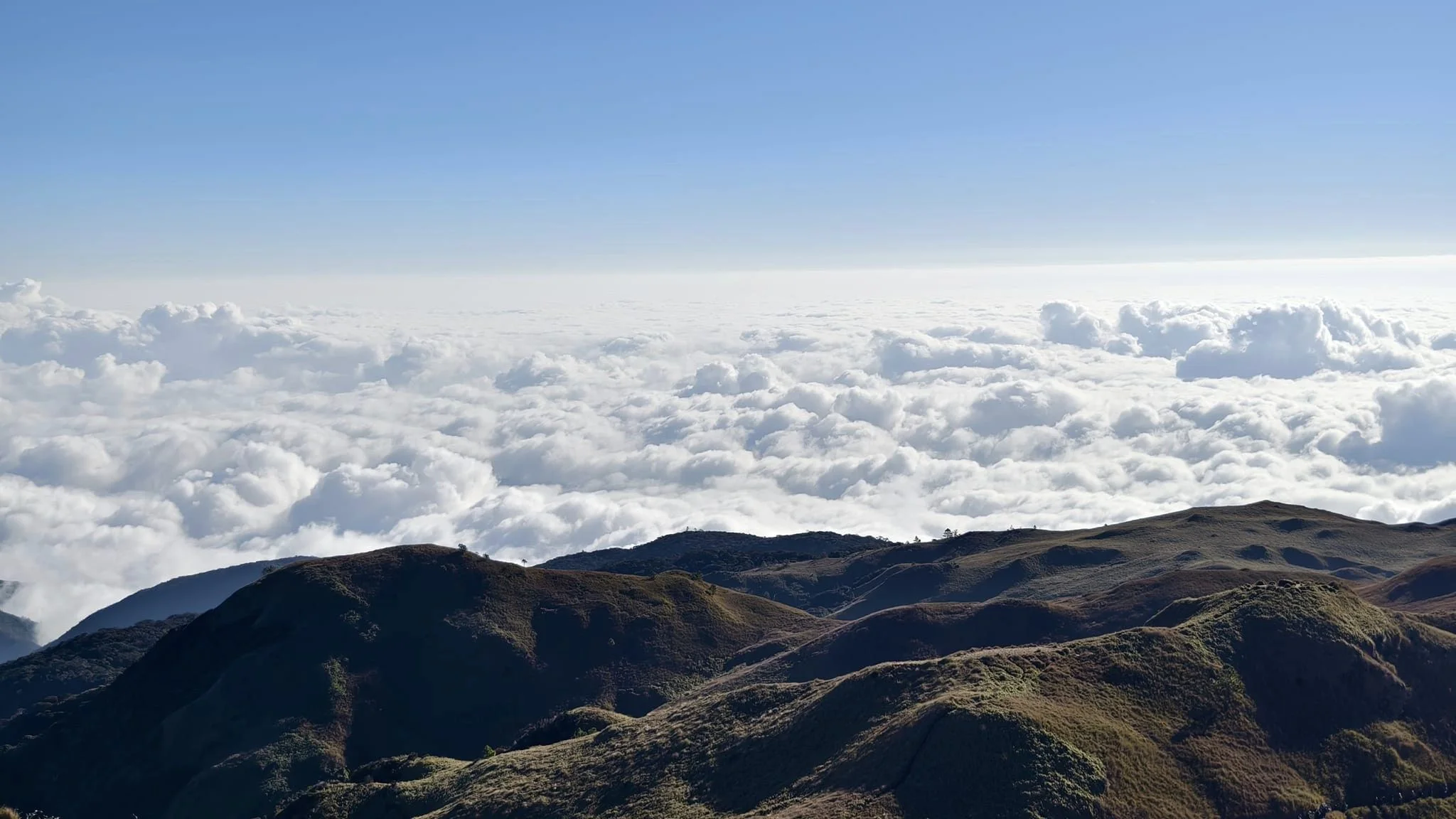
Sample Itinerary for Mt. Pulag (2D1N Weekend Schedule)
This optimized weekend itinerary minimizes the risk of altitude sickness by prioritizing rest on Day 1 and positioning you at the Ranger Station for the mandatory 1:00 AM summit wake-up call. Unlike the old camping days, this schedule revolves around the “Sunrise Assault” protocol.
Day 0: The Friday Exodus
22:00 PM: Depart Victory Liner Cubao or Pasay.
Pro Tip: Book the “Deluxe” or “First Class” bus. Your goal is to sleep through the 4-hour TPLEX drive. Arriving in Baguio sleep-deprived is the fastest way to get altitude sickness later.
Day 1: Acclimatization & Logistics
04:00 AM: Arrive in Baguio City. The air will be cool (approx. 15°C). Grab a hot meal at a 24/7 diner near the terminal.
06:00 AM: Board your pre-arranged Monster Jeep. Take your Bonamine now; the road to Bokod is dizzying.
07:30 AM: Stopover at Ambuklao Dam. The morning light hitting the reservoir is perfect for photos.
08:30 AM: Breakfast at Jangjang Eatery in Ambangeg.
Activity: Cross the nearby hanging bridge to loosen up your legs.
09:30 AM: DENR Visitor Center. Submit your medical certificate, pay fees, and attend the mandatory briefing on “Leave No Trace” principles.
11:30 AM: Arrival at Babadak Ranger Station. Check-in at your homestay.
13:00 PM: Lunch and Free Time.
The Acclimatization Hack: Do not take a deep nap immediately. Walk around the village, chat with locals, or organize your summit pack. Active recovery helps your body adjust to the thin air at 2,400 MASL better than sleeping does.
18:00 PM: Dinner. Load up on carbohydrates (rice/pasta).
20:00 PM: STRICT LIGHTS OUT. This is non-negotiable. You need at least 5 hours of sleep before the alpine start.
Day 2: The Summit Assault
01:00 AM: Wake up. Drink hot coffee or ginger tea immediately to warm your core.
02:00 AM: Start Trek via Ambangeg Trail. You will be hiking in pitch darkness, relying entirely on your headlamp.
05:30 AM: Arrive at the Mt. Pulag Summit. Find a spot among the dwarf bamboo facing east.
06:00 AM: Sunrise viewing.
07:30 AM: Start Descent. This is when you finally see the Mossy Forest in daylight.
11:00 AM: Back at Ranger Station. Wash up and pack.
13:00 PM: Log out at DENR Ambangeg. Claim your Climb Certificate (optional souvenir).
17:00 PM: Arrive back in Baguio City. Celebration dinner (Good Taste Restaurant is the classic choice) before the night bus to Manila.
Practical Takeaway: Pack your hiking boots at the top of your bag on Day 0. You might need to wear them immediately if it’s raining when you land in Baguio or transfer to the jeep.
Budget Breakdown: How Much Does It Cost to Conquer Mt. Pulag?
For the 2026 season, a standard “Joiner” tour package averages between ₱3,500 and ₱4,500 (all-in from Manila), while a DIY trip for a small group (4 pax) costs approximately ₱7,000 per person. The primary cost driver for DIY expeditions is the chartered Monster Jeep, which commands a flat rate regardless of passenger count.
The Financial Reality: DIY vs. Joiner
Many hikers assume that Do-It-Yourself (DIY) is cheaper. For Mt. Pulag, this is mathematically incorrect unless you are traveling with a full squad of 10-15 people to split the logistics. Solo travelers and couples attempting a DIY run often face “sticker shock” when they realize they must rent the entire jeep (₱8,500+) and hire a guide (₱1,200) exclusively for themselves.
Comparative Expense Table (Per Person Estimates)
Expense Item | DIY Cost (Group of 4) | Joiner Package (Solo) | Context |
|---|---|---|---|
Transport (Manila-Baguio) | ₱1,600 – ₱2,200 | Included (Van) | Roundtrip Bus Fares |
Monster Jeep Charter | ₱2,125 (₱8.5k / 4) | Included | Charter vs. Shared Van |
Gov’t Fees (Green/Ent) | ₱600+ | Included | Mandatory Park Fees |
Guide Fee | ₱300 (₱1,200 / 4) | Included | Mandatory Guide Ratio |
Homestay | ₱500 | Included | Standard Nightly Rate |
Food (5 Meals) | ₱1,500 | ~₱500 | DIY buys all; Joiner has some covered |
Medical Cert | ₱150 | Included/Excluded | Varies by agency |
ESTIMATED TOTAL | ~₱6,775 – ₱7,500 | ₱3,500 – ₱4,500 | Joiner saves ~40% |
Cash is King (The ATM Desert)
There are zero ATMs in Bokod and no reliable signal for GCash or Maya at the Ranger Station. Once you leave Baguio City, you are in a cash-only economy.
The “Hidden” Costs: You need to budget for specific out-of-pocket expenses that packages rarely cover:
Hot Shower: ₱50 – ₱100 per bucket.
LGU “Cultural” Fee: Sometimes collected separately (₱30).
Climb Certificate: ₱50 (Optional souvenir).
Pasalubong: Bokod is famous for dirt-cheap vegetables. You can buy a kilo of broccoli for a fraction of Manila prices.
Practical Takeaway: Bring at least ₱2,000 – ₱3,000 in loose cash (₱50s and ₱100s) on top of your package fee. Paying for a ₱20 cup of coffee with a ₱1,000 bill is a logistical nightmare for local vendors.
Essential Gear for Mt. Pulag: Surviving the Cold
Surviving the sub-zero summit temperatures of Mt. Pulag requires a strict 3-layer system: a moisture-wicking base layer (Drifit/Thermal), an insulating mid-layer (fleece or down jacket), and a windproof/waterproof outer shell. Essential accessories include a headlamp (mandatory for the 2:00 AM start), thick wool socks, gloves, and a bonnet. Never wear cotton.
The 3-Layer System (Why Cotton Kills)
The biggest mistake first-time hikers make is wearing thick cotton hoodies or denim jeans. In mountaineering, the adage is “Cotton Kills.” When you sweat during the ascent, cotton absorbs the moisture and holds it against your skin. Once you stop moving at the summit and the wind hits, that wet fabric freezes, leading to rapid hypothermia.
Base Layer: Synthetic Drifit or Merino wool. Its job is to move sweat away from your skin.
Mid-Layer: Fleece or a down jacket. Its job is to trap body heat.
Outer Shell: A windbreaker or rain jacket. Its job is to block the freezing wind and moisture from the mossy forest.
Footwear: Traction Matters
While the Ambangeg trail is not technically technical, the Mossy Forest zone is perpetually wet. Standard running shoes with flat soles become ice skates on the mud-slicked roots.
Recommendation: Wear hiking shoes or trail runners with aggressive lugs (deep tread).
Socks: Bring at least 3 pairs. One to hike in, one to sleep in (keep these dry!), and a spare. Thick wool socks are superior because they stay warm even when damp.
Electronics: The Cold Drain
Lithium-ion batteries (found in iPhones and cameras) drain rapidly in freezing temperatures. A fully charged phone can die in 15 minutes at the summit if exposed to the cold air.
The Hack: Keep your phone and power bank inside your jacket, close to your body heat. Only take them out when you are ready to snap a photo.
Light Source: Do not rely on your phone flashlight. You need your hands free for trekking poles. A dedicated headlamp with fresh batteries is non-negotiable for the pre-dawn assault.
Conclusion & Responsible Tourism (LNT)
Mt. Pulag is more than just a bucket-list destination or a backdrop for Instagram; it is a fragile ecosystem and a sacred cultural domain. The only way to ensure it remains open for future generations is to strictly adhere to the “Leave No Trace” (LNT) principles.
Garbage In, Garbage Out
The rule is absolute: Whatever you bring up, you must bring down. This includes candy wrappers, wet wipes, and even biodegradable fruit peels (which take months to decompose in the cold). There are no trash bins on the trail because there are no garbage trucks to collect them. Carry a small ziplock bag in your pocket for your personal trash.
Silence is Respect
As you walk through the Mossy Forest, keep your voice down. You are entering the habitat of the cloud rat and the Philippine deer. Furthermore, for the Ibaloi people, loud noises can disturb the spirits that dwell in the mountain. The silence of the forest is part of the experience—don’t ruin it with Bluetooth speakers.
Ready to conquer Mt. Pulag? The sea of clouds awaits, but it favors the prepared. Go to your doctor today, secure your “Fit to Climb” certificate, and book your slot. The Playground of the Gods is calling.
Explore More of the Cordilleras (Related Guides)
Maximize your trip to the North! Since you are already in the Cordillera region, consider extending your itinerary to these nearby destinations.
Hiking Alternatives
Guide to Mt. Ugo Traverse: A great alternative if Pulag slots are full, featuring pine forests and local villages.
Mt. Kupapey & Mt. Fato: A lighter hiking option in Mountain Province with stunning terraces views.
Mt. Kabunian (Bakun Trio): For those seeking dramatic rock faces and waterfalls.
Relaxing Side Trips
Northern Blossom Flower Farm: The perfect stopover in Atok, Benguet on your way back to Baguio.
Lake Tabeo in Kabayan: Camping by the lake near the Tawangan trail jump-off.
The Grand Cordillera Loop
Sagada, Mountain Province: Famous for hanging coffins, caves, and a chill vibe.
Banaue Rice Terraces: The UNESCO World Heritage site that needs no introduction.
Buscalan Tattoo Village: Visit the legendary Apo Whang-Od in Kalinga.


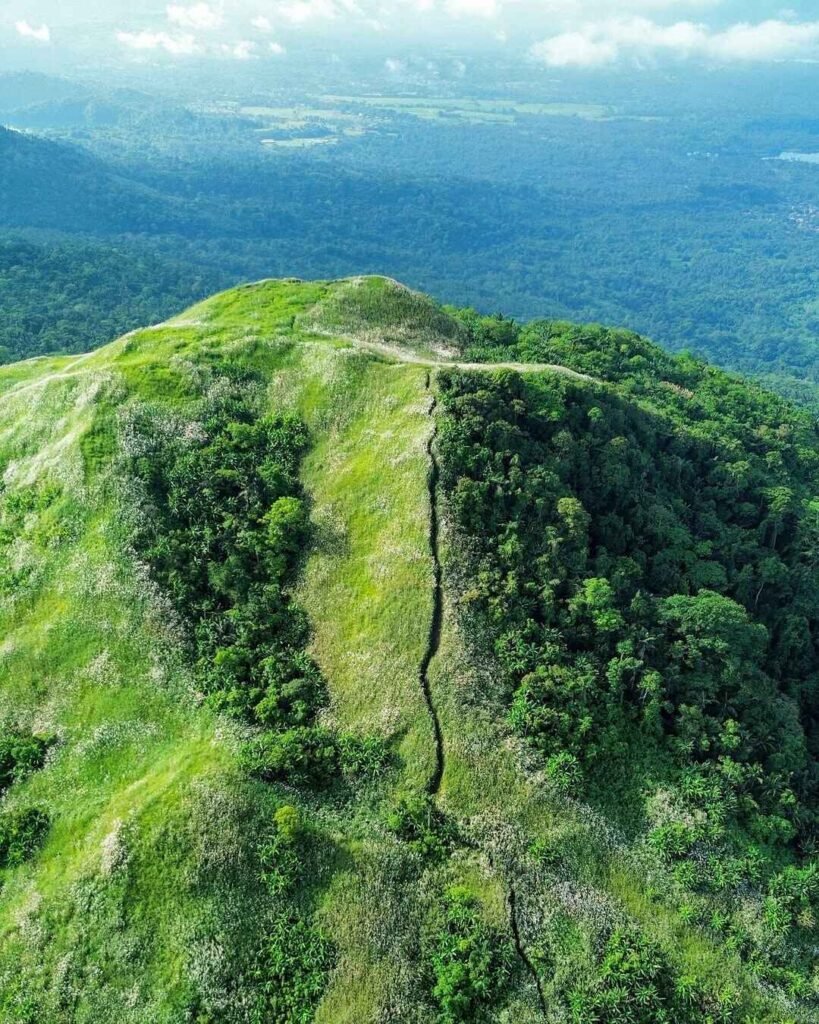
Pingback: Travel Guide: Explore the Beauty of the Philippines with Exp – BizLinkBuilder
Thanks for sharing. I read many of your blog posts, cool, your blog is very good.
Hi, thanks for sharing the DIY. Do you now if there is a schedule trip from ranger station to baguio?
Thank you